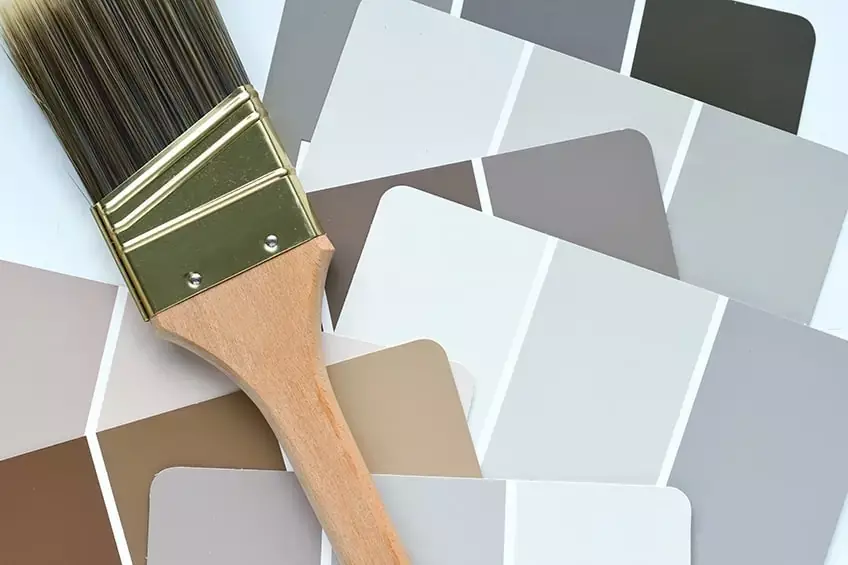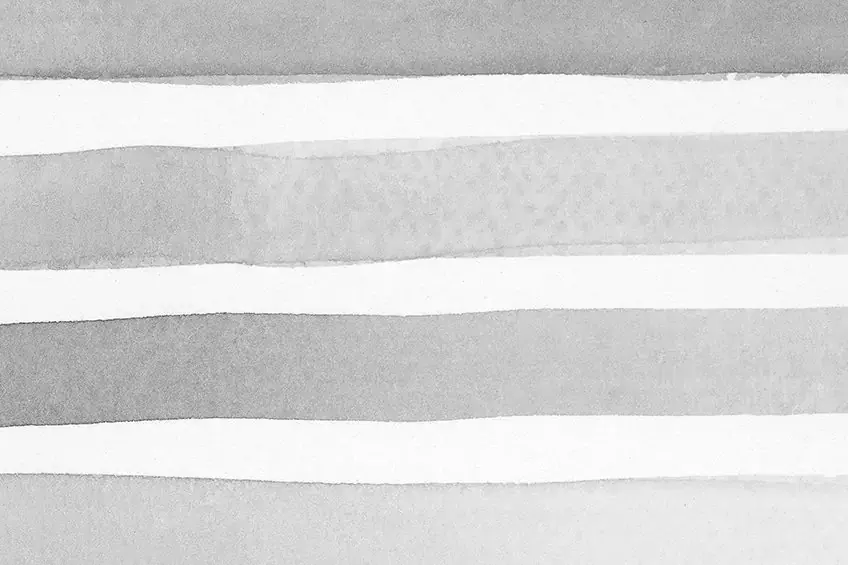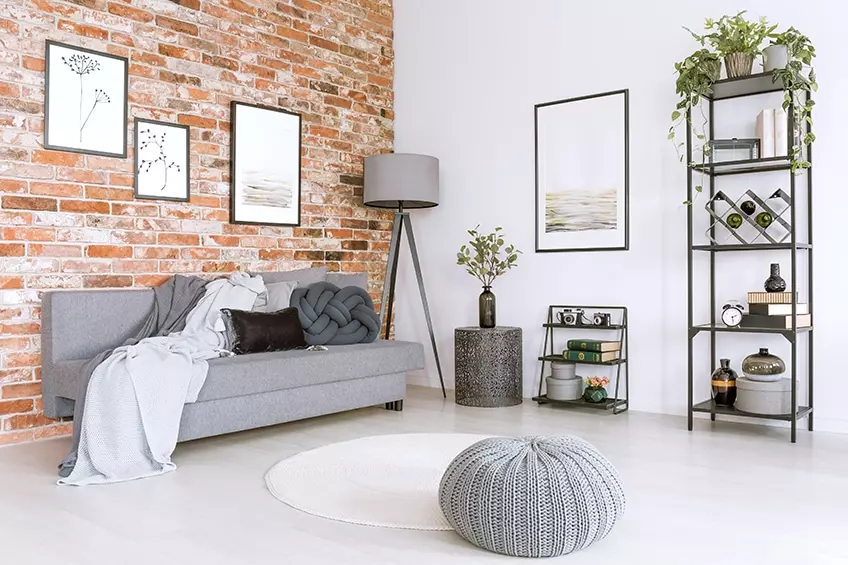Gray is often considered a neutral and achromatic color that can be created by mixing black and white. However, there are other methods of creating gray and its various shades by using complementary or primary colors. In this article, we will delve deeper into the world of gray and uncover its fascinating history, its artistic uses, and how you can incorporate it into your home decor.
History of Gray: From Peasants to Paintings
Gray has a rich history that dates back to the Renaissance and Baroque periods when it became popular in fashion and painting. Peasants and poorer people often wore undyed gray wool, which eventually influenced the fashion trends of the time. Gray was used in paintings, particularly in the technique known as grisaille, which involved working with gray monochrome colors.
During the eighteenth and nineteenth centuries, gray found its way into dresses, waistcoats, and eventually into business suits, becoming a staple in the fashion world. Gray was also commonly used in military uniforms due to its less visible nature. Artists like James McNeill Whistler even utilized gray as a background color in their famous works.
 Caption: Gray is an unassuming color that allows other colors to stand out.
Caption: Gray is an unassuming color that allows other colors to stand out.
The Magic of Gray: Calming and Versatile
Gray may not be the most popular color, but it has its own unique charm and versatility. In painting, gray can add depth by influencing shadows and creating a contrast between darkness and light. It can also be used to paint walls, adding an elegant and sophisticated look to any room. When paired with other colors, gray can create contrast and draw attention.
Gray is widely used in the design and décor industry to create the perfect atmosphere in a room. Lighter grays can create a calm and soothing feeling, while darker grays can evoke a sense of strength. Gray doesn't have to be associated with doom and gloom; it can also represent wisdom and other positive qualities. Painting with gray can bring life and contrast to an image.
What Two Colors Make Gray?
The simplest way to create gray is by combining equal amounts of black and white. However, gray can also be achieved by mixing complementary colors that are opposite each other on the color wheel. For example, red and green, blue and orange, or yellow and purple. When these colors are mixed, they create a form of gray that retains some qualities of both colors.
Another method is to combine all three primary colors (red, yellow, and blue) to create a primary gray. By adjusting the amounts of each color, you can achieve different shades of gray. The choice of colors and their biases can also affect the outcome of the gray color. Experimenting with different color combinations can help you create unique shades of gray.
The Best Gray Combination: Adding Colors for Brightness
The combination of black and white can create a basic gray, but it may appear dull and flat. To make gray brighter and cleaner, you can add other colors. For example, adding orange and blue can create a warm and cool hue, respectively.
If you add too much of one color, such as blue, you can balance it out by adding colors that lean towards warmer or lighter tones. By adding identical, tiny amounts of white and orange to blue-gray paint, you can make it brighter and lighter.
 Caption: Experimenting with color combinations can help you create the perfect shade of gray.
Caption: Experimenting with color combinations can help you create the perfect shade of gray.
Scientific Hex Codes for Gray Colors
Apart from mixing colors, you can also identify gray colors using hexadecimal codes (hex codes). Hex codes are abbreviated versions of RGB codes, which determine colors for computer use. Below are a few popular gray colors with their hex codes:
- Gray: #808080 (128, 128, 128, 0, 0, 50)
- Dark Gray: #A9A9A9 (169, 169, 169, 0, 0, 34)
- Cool Gray: #9090C0 (144, 144, 192, 25, 25, 0, 25)
- Charcoal: #36454F (54, 69, 79, 32, 13, 0, 69)
- Battleship Gray: #848482 (132, 132, 130, 0, 2, 48)
- Ash Gray: #B2BEB5 (178, 190, 181, 6, 0, 5, 25)
- Gunmetal: #2A3439 (42, 52, 57, 6, 9, 0, 78)
- Light Gray: #D3D3D3 (211, 211, 211, 0, 0, 0, 17)
- Medium Gray: #BEBEBE (190, 190, 190, 0, 0, 0, 25)
- Silver: #C0C0C0 (192, 192, 192, 0, 0, 0, 25)
- Stone Gray: #928E85 (146, 142, 133, 3, 9, 0, 43)
- Storm Cloud: #4F666A (79, 102, 106, 25, 4, 0, 58)
How to Make Gray With Acrylic Paints?
Gray is a neutral color that can add depth and dimension to a painting, capturing the play of light and shadows. Apart from the basic method of mixing black and white, you can also create gray with complementary colors or all three primary colors.
You can also purchase gray paint and adjust it by adding more white or black. Experimenting with different colors will produce grays that are either warmer, cooler, lighter, or darker. Keep a record or palette of your color mixtures for future reference.
 Caption: Mixing different colors can help you create a range of gray shades with acrylic paints.
Caption: Mixing different colors can help you create a range of gray shades with acrylic paints.
How to Create Gray Watercolors?
Creating gray watercolors can be done by diluting black, but this may result in a slightly dull color. To achieve more varied options and depth in your paintings, hand-mixed gray is preferred. You can use gray paints straight from the tube, but it's important to test them out and wait for them to dry to see their true colors.
Mixing blue, red, and yellow watercolors can create various neutral grays. You can adjust the color by using any one of these three primary colors. Experimenting with different combinations can lead to more unique and realistic representations. Gray can bring depth, dimension, and intensity to your watercolor paintings.
 Caption: Experiment with mixing different watercolors to create striking shades of gray.
Caption: Experiment with mixing different watercolors to create striking shades of gray.
Gray Colors and Decor: Sophistication and Versatility
If you're considering painting your walls or adding color to your home decor, gray can be an excellent choice. It is a neutral color that provides a sophisticated and timeless look. Lighter shades of gray create a more feminine and calming feel, while darker shades offer a masculine impression.
You can incorporate gray into a room by painting walls, furniture, or adding accessories. Gray serves as a versatile backdrop that works well with other colors. It can create a relaxed atmosphere in bedrooms when combined with earth tones like green or browns. For a more contemporary feel, you can opt for dark grayish purple and add gold accents for a touch of elegance.
Gray also works well with vibrant colors, as it can tone down their intensity and create a balanced effect. In kitchens, gray can be used on countertops, cabinets, or appliances, providing a stylish and modern look. In bathrooms, it can be paired with brass fixtures for a touch of luxury.
 Caption: Gray can be the perfect backdrop for adding patterns, textures, and accents to your home decor.
Caption: Gray can be the perfect backdrop for adding patterns, textures, and accents to your home decor.
Choosing the right shades of gray depends on understanding the underlying tones. Warmer grays go well with warm colors, while cooler grays complement cool colors like navy blue, cool greens, and whites. By recognizing the color temperature, you can easily create a harmonious color palette for any room. Gray provides a perfect canvas for incorporating a variety of patterns, textures, and accents.
Painting with gray opens up a world of possibilities, allowing you to experiment and create unique atmospheres in your living spaces. So embrace the beauty of gray and start exploring its charm today!
(This article may contain affiliate links. We may earn a small commission from purchases made through them, at no additional cost to you.)
View our How to Make Gray web story here.
Frequently Asked Questions
Q: How to make gray paint? A: The most basic method is to mix black and white to achieve a neutral gray color. However, you can also create gray by mixing complementary colors or primary colors. Adding white will then give you different shades of gray.
Q: Is it possible to mix gray without using white? A: While you can mix complementary or primary colors to create gray, adding white is essential to lighten the color. Without white, it would be challenging to achieve lighter shades of gray.
Q: What is the easiest method for mixing gray acrylic paint? A: You can use gray paint straight from the tube or create gray by combining primary colors and gradually adding white to achieve different shades. This method offers more variety in hues and tones.
Q: Is gray a cool or warm color? A: Gray itself is a neutral color, but the addition of different colors can create cool or warm grays. Cooler grays have blue undertones, while warmer grays lean towards orange, yellow, or red undertones.
Remember, painting with gray is a journey of exploration and creativity. Don't be afraid to experiment with different colors and techniques to find the perfect shades of gray that bring your artistic vision to life.









